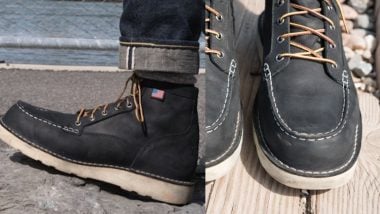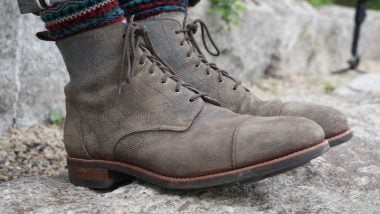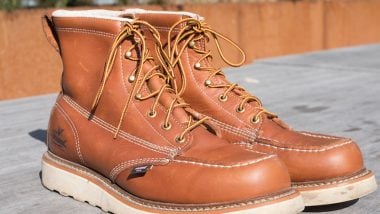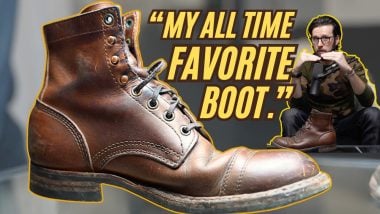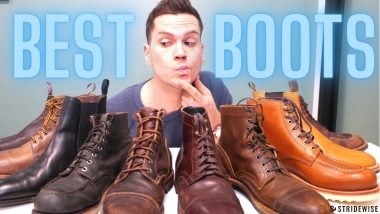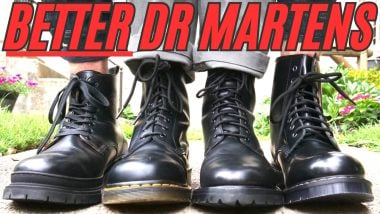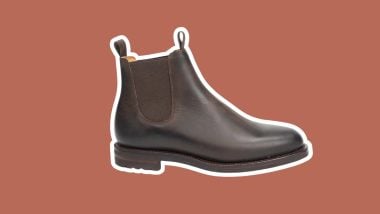A Better Wolverine 1000 Mile Review (2025 Update)
The second video I ever did was a review of the Wolverine 1000 Mile boots, and look: it wasn’t very good. I didn’t have a ton of experience and I misunderstood and overlooked a lot of things that make this a pretty interesting boot.
So, seven years later, I’m re-reviewing the Wolverine 1000 Mile with a ton more experience in the industry.
I’ll list the mistakes I made in the first review while I assess this boot’s leather, fit, construction, aesthetic, and how it compares to its competitors. But don’t worry; I’m writing this in a way that anyone new to the world of boots can understand as well.
Key Takeaways: Wolverine 1000 Mile
This casual boot is pretty reasonably priced for being made in the USA with a resoleable Goodyear welt. Durable and water resistant, roomy in the toe, unusually lightweight, and available in several soles (you don’t have to get the leather one), the 1000 Mile isn’t great at dressing up or absorbing shock, but it’s a solid product.
Wolverine 1000 Mile Pros & Cons
In a hurry? Here’s a rundown of what we liked and didn’t like about the 1000 Mile.
Pros
- Goodyear welt construction makes it resoleable, water resistant, and very durable
- Made in the USA
- Under $400 is actually pretty good price
- Made of the most beloved casual boot leather on Earth, which is produced in Chicago
- Extremely lightweight and breathable for this kind of boot
- Fit is nice and roomy; no pinky squeezing tapered toebox
- Leather sole has a ton of benefits, but you also don’t have to get that sole if you don’t want to
This classic casual boot is lightweight, resoleable, ages beautifully, and is priced well compared to similar boots made in the USA.
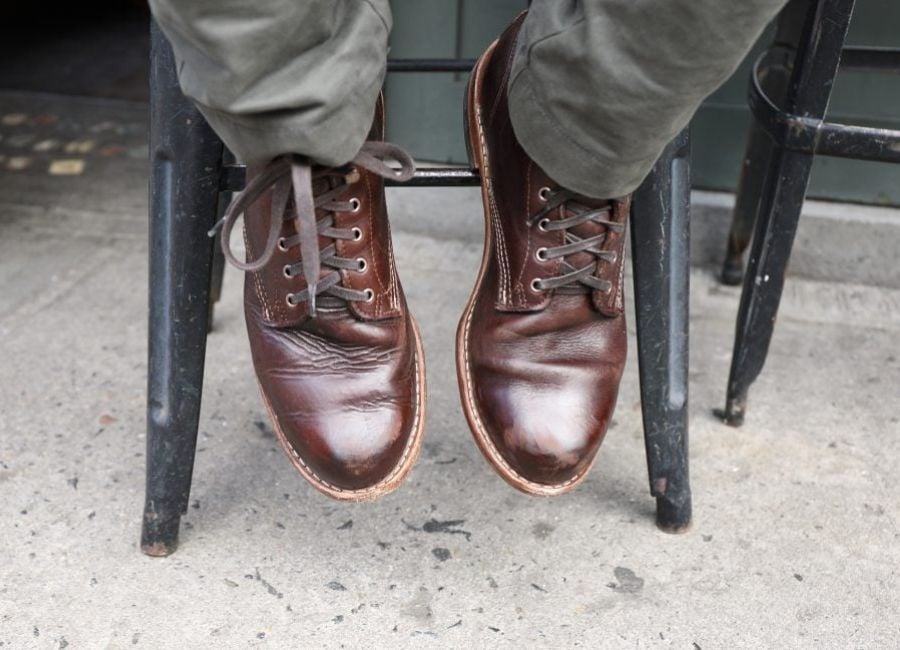
Cons
- Leather soles have some downsides, especially with the grip — but you can pick a rubber sole instead if you want
- Shock absorption isn’t great; this is an old fashioned boot that prioritizes groundfeel and flexibility
- Wolverine’s a billion dollar conglomerate; some prefer small businesses for this kind of product
- No wide widths at the moment
- It’s casual, you can’t dress it up
- Might not be as waterproof as you want; the tongue just partially gusseted and the Goodyear welt is 270 degrees
- Partially lined with pigskin, so it’s not kosher or halal
- Heel counter is cellulose and insole is fiberboard; some boot aficionados would prefer leather instead
Why My Opinion Is Worth Listening To
I’ve been reviewing boots since 2018, and like I said: I’m redoing this early review of the 1000 Mile because I’ve had a ton of industry experience since then.
I’ve visited boot factories and workshops in Spain, Indonesia, England, America, India, Vietnam, and a bunch of other places. I even made my own boots in Guatemala with leather I made myself in Mexico.
Maybe most importantly, I’ve interviewed lots and lots of experts along the way. Most recently, a bootmaker in Pennsylvania who reminded me that what I hated the most about these boots in my original review is now my favorite thing about them.
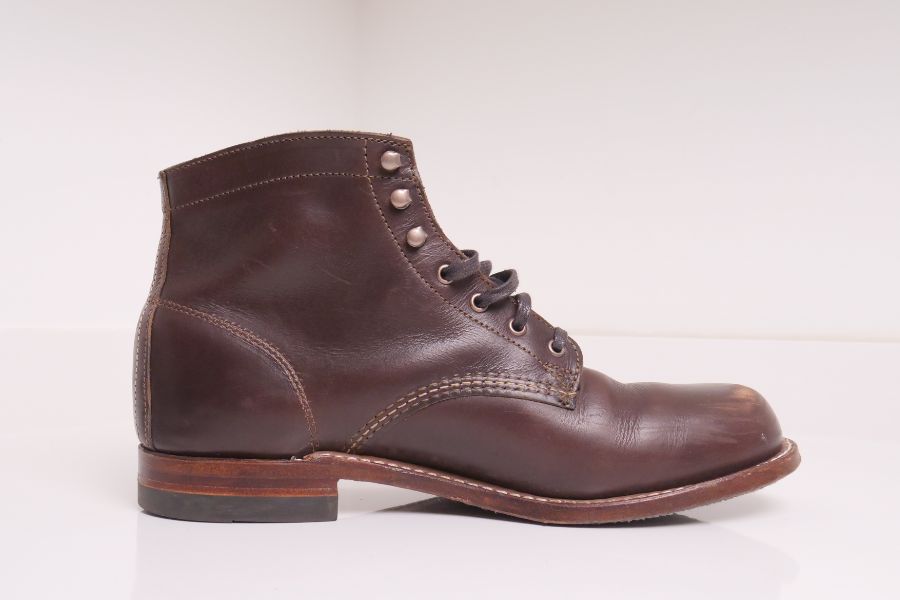
Wolverine: A Brief History
This company started in 1883 as a little leather workshop in Rockford, Michigan. They expanded in 1901 with a 2,900-dollar investment and it’s now a publicly traded company called Wolverine Worldwide with over 2.5 billion dollars in annual revenue. Their subsidiaries include Hush Puppies, CAT Footwear, Harley Davidson Footwear, Merrell, Saucony, and others.
I’m sure they sell way more of their 150-dollar, Asian-made work boots, but the 1000 Mile is their hero product. It’s certainly the one they talk about the most when they want to sound like they make all their boots in the U.S. They don’t, but the 1000-mile is indeed still made in the USA, just as it was when it debuted in the 1910s.
Back then it was made of horse leather (there were a lot more hides to go around before cars were so widespread), but today the upper is something else.
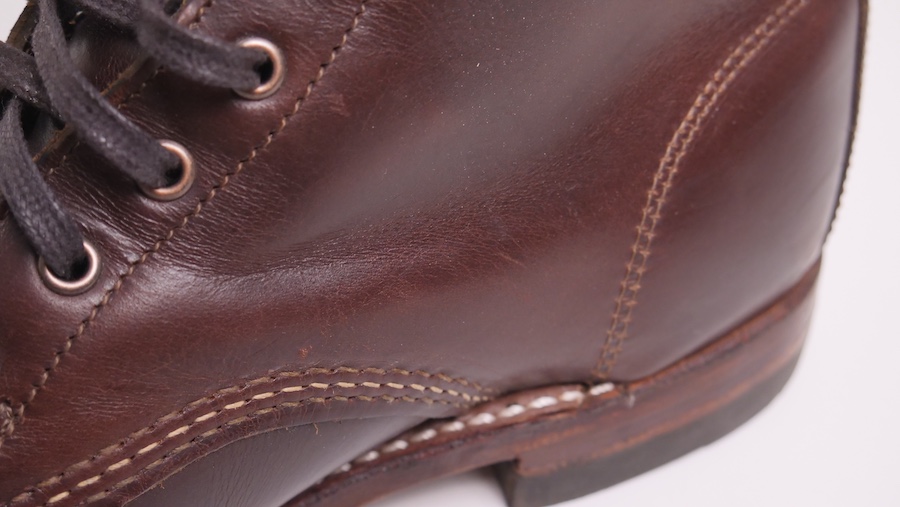
Wolverine 1000 Mile Leather
- Just available in Black or Brown (usually)
- Leather is Chromexcel, the most beloved and widespread casual boot leather
- Oily and waxy = water resistant and ages beautifully
After years of hard-hitting boot journalism, I can tell you this: Chromexcel is the most beloved casual boot leather in the whole world. Brands from the $200 pricepoint to the $1,000 pricepoint use the stuff.
It’s made in Chicago by Horween Leather Company (click that to see my tour of the place) and it has a rich history: it was used on engine seals in World War 1 and a roughout version was used for servicemen’s boots in World War 2.

Chromexcel is jam-packed (hot stuffed is the term) with oils and waxes, including beeswax and beef tallow, which have the twin benefits of making it very water-resistant (they’re hydrophobic) and pretty long lasting (it doesn’t dry out easily).
This kind of leather is called pull up leather, a term that gets used when a leather is so full of oils that they move around the leather with wear, producing highs and lows in the color. It looks great, and the effect gets more dramatic and beautiful with wear. The pull up makes it a casual leather, but it might be the best one there is.
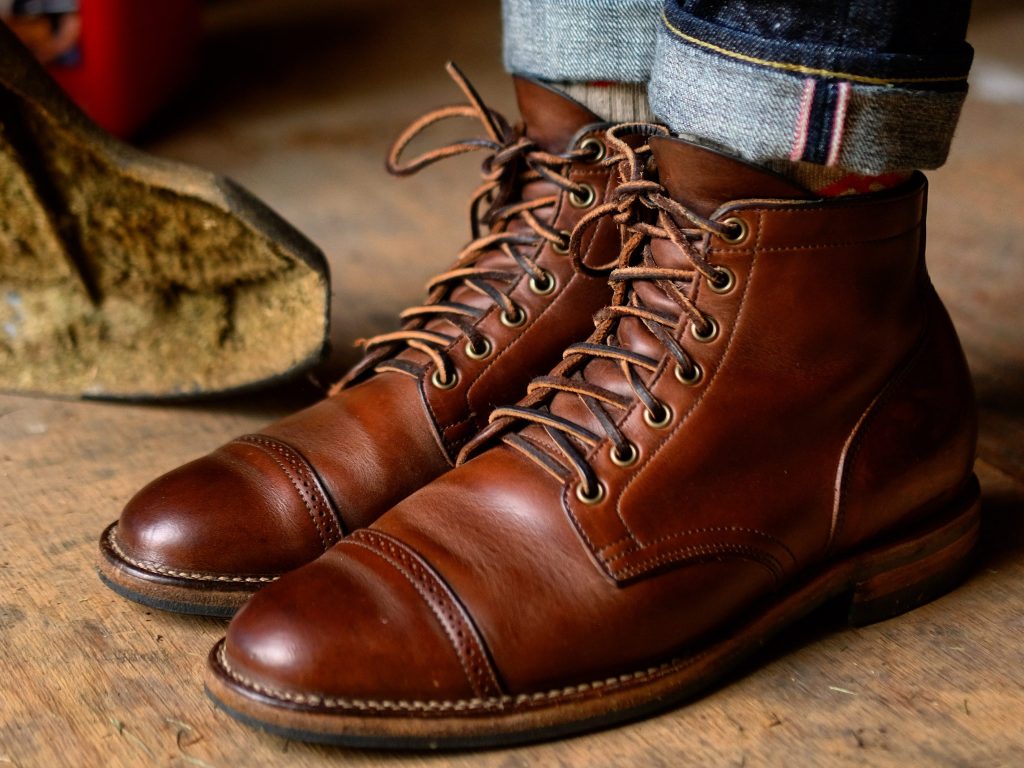
The downsides are that it tends to pick up serious creases in the leather (especially when it’s used by a big brand like this one, who don’t spend a ton of time selecting perfect parts of the hide) and it scratches a little easily.
It’s not too hard to buff scratches out of a pull up leather, but it’s still a bit more work to keep the surface looking uniform than it is for a roughout leather or even some other work boot leathers, like their competitor Red Wing’s.
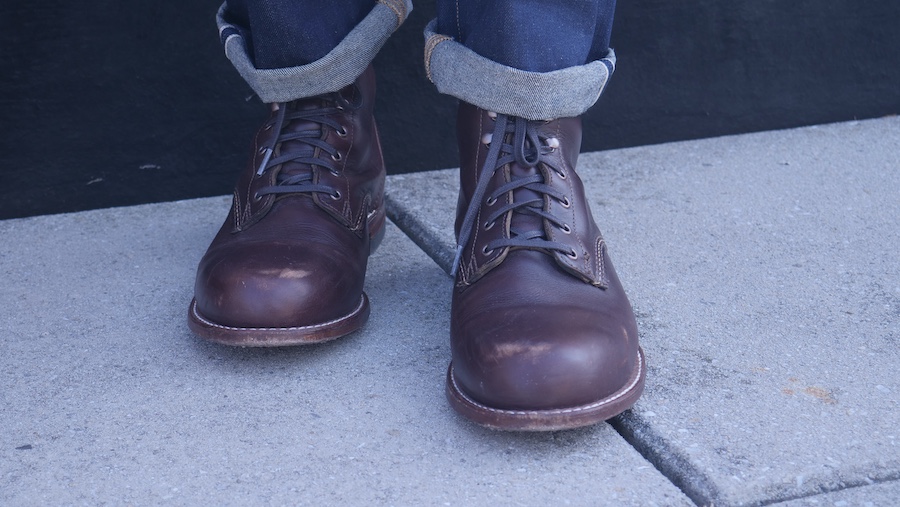
Wolverine 1000 Mile Fit and Sizing
- Order a half-size down from your “true” size on a Brannock device
- Roomy toebox is comfy and more forgiving on slightly wider feet
- Currently no wide widths though
- Easy to break in
You should order a half size smaller than your Brannock size, which is the number that you get from the device that fits your foot in the shoe store.
I could tell you to just “order a half size smaller than your sneaker size,” and you would probably be fine. But sneakers run small half the time; I’m an 11.5 on a Brannock device, an 11 in all my boots, and my sneakers are a mix of 11.5 and 12.

So if you don’t know your Brannock, look at all your sneakers, note which sizes you’ve got, and subtract 0.5 from the smaller size if there is one. That will likely work, but you should really just go get sized at a shoe store and order half a size down from that number.
The good news is that they’re roomier in the toe than a lot of the common almond-shaped boots out there, so there’s not a huge risk of getting boots that mush your pinkies when ordering online.
There are currently no wide widths, but that roomy toe means it might fit an E width foot, and you also have the option of going up half a size (to your Brannock size) if you’re on the wider side. That strategy often works.
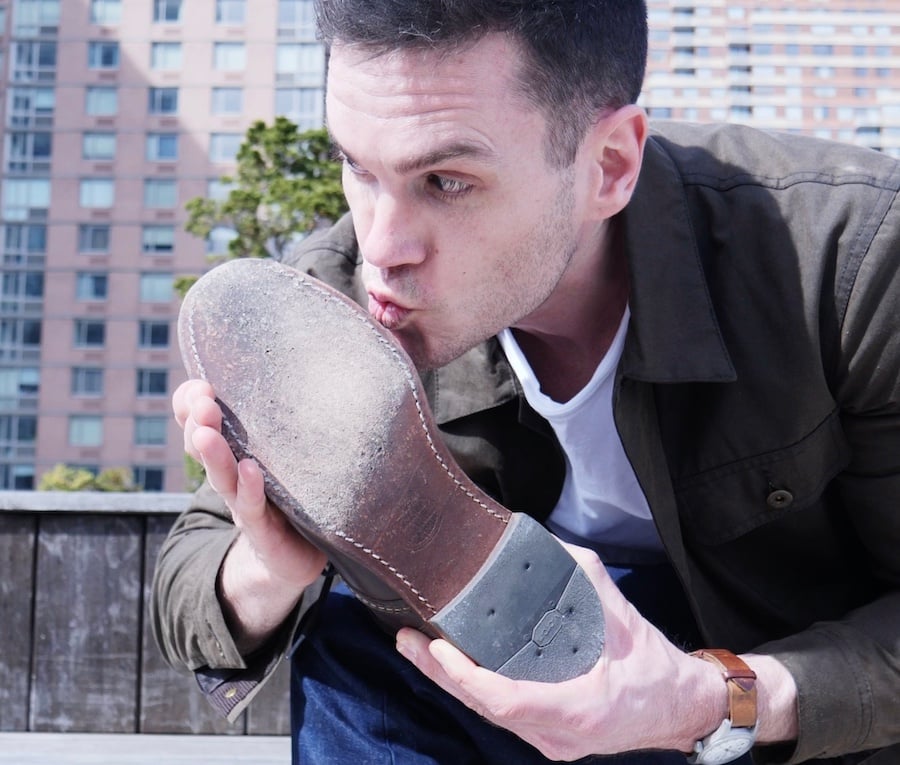
Wolverine 1000 Mile Sole
- The “Original” boot has a leather sole
- Two rubber-soled versions exist with different levels of grip
The most controversial thing about this boot is the leather sole — and I was so wrong to hate on it in my first review.
This is probably the most popular leather-soled booted in America. I think it’s really commendable that Wolverine steadfastly continues to sell this at the top of their 1000 Mile range despite the market’s overwhelming dislike and mistrust of leather soles.
Now, if you don’t want a leather sole, you don’t have to get it. There are several other soles available for this boot if you aren’t sold on the sole.
Why Leather Soles Are Great
I won’t spend a ton of time on this, so here are some quick bullet points:
- The grip isn’t that bad; after a few wears, the sole gets scratched up, and it provides surprisingly decent grip.
- They break in easily compared to rubber soles.
- They’re cheaper than other soles; it’s cool when a brand gives you the option of leather.
- They’re cheaper to resole; the operation’s easier for a cobbler.
- They’re breathable; that’s why cowboy boots usually have them.
- They’re more odor-resistant.
- They’re low profile, making a boot less casual than a chunky, luggy sole.
- They’re more lightweight.
- They’re really comfortable: softer than rubber, boots like this give you more groundfeel: you’re protected, but you can feel your environment more. It’s pleasant!
This classic casual boot is lightweight, resoleable, ages beautifully, and is priced well compared to similar boots made in the USA.
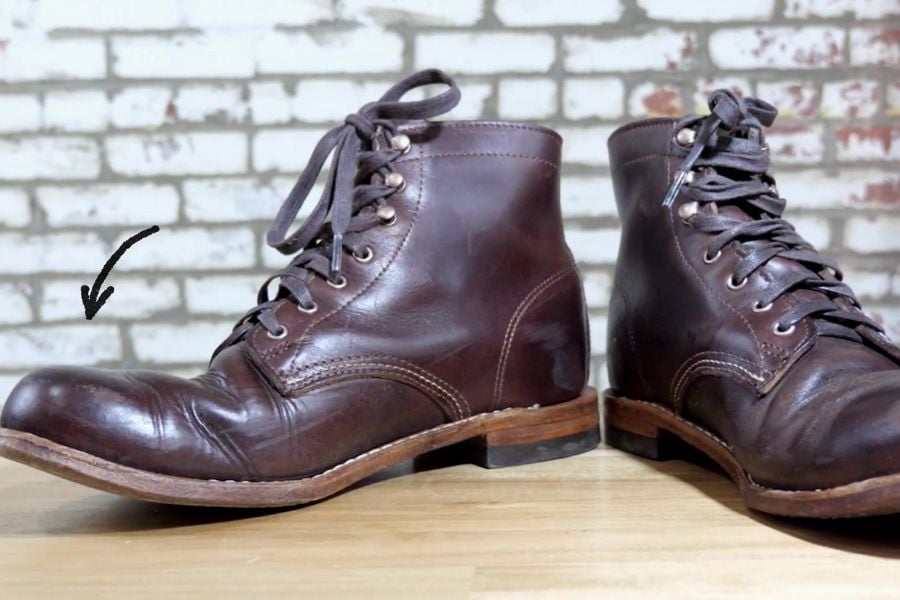
Why Leather Soles Suck
- They don’t grip carpet or tile well; you need a handrail when going down most indoor steps.
- They wear down a bit faster than rubber soles.
- They’re prone to toe curl; you need to use shoe trees or the toe will slowly curl upward.
- They aren’t great at shock absorption relative to a Cristy wedge sole or something, but they’re actually softer than a lot of hard rubber soles.
Anyway, leather soles are great — that groundfeel element is hard to describe but worth experiencing — but you don’t have to get it.
Further Reading
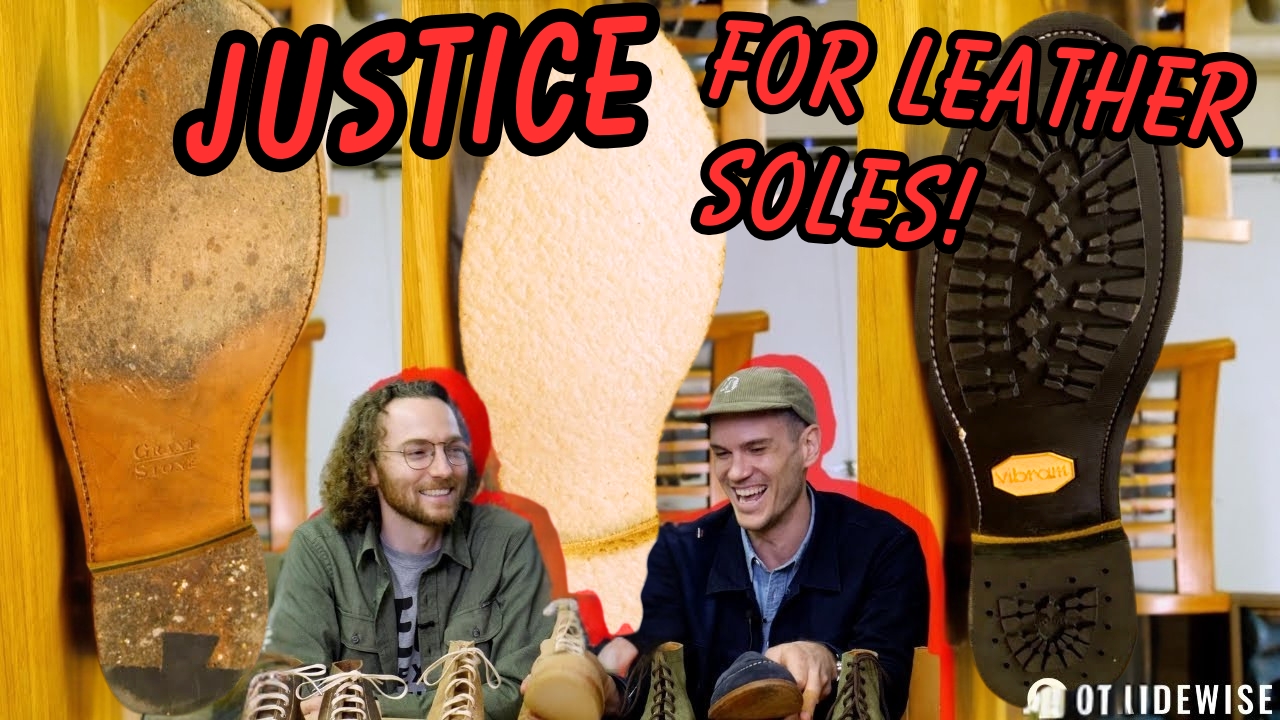
Types of Boot Soles You Should Know About: Rubber vs Leather vs Crepe
I met up with bootmakers to learn the differences between the most popular boot soles.
Learn more about boot soles →
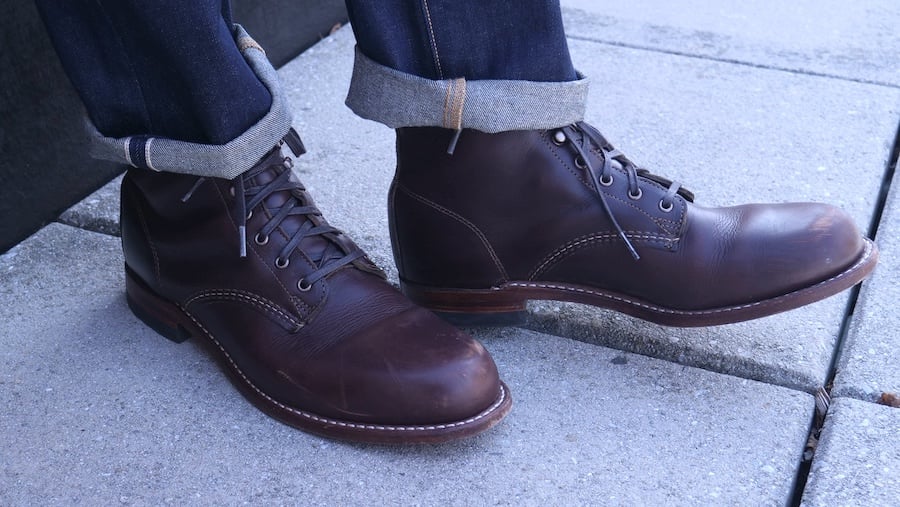
Wolverine 1000 Mile Construction
- No midsole = extra flexibility, lightness, and groundfeel, but lower shock absorption
- Fiberboard insole; some prefer leather, but this helps keep it lightweight
- 270-degree Goodyear welt
- Fiberglass shank
- Partially lined with pigskin
- Half sock lining; leather footbed extends to midfoot
Moving on from the leather outsole, it has a fiberboard insole, cork filling in the welt cavity, and a fiberglass shank. Everything is held together with Goodyear welt construction, which makes a boot very durable, easy to resole, and very water-resistant.
One very subtle thing to note is that these have a 270-degree Goodyear welt: if you look closely, the stitching running around the perimeter disappears under the heel.
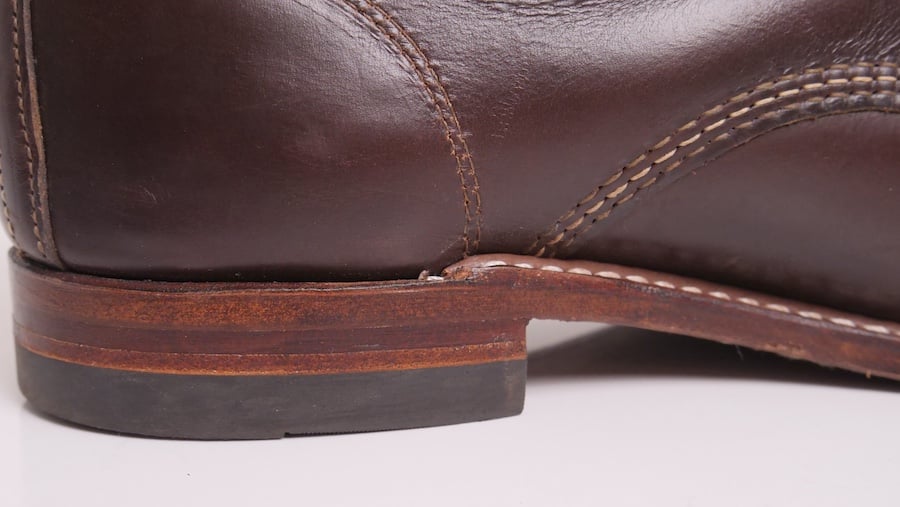
People debate about whether or not a 270-degree welt makes a difference to anything. It’s done for aesthetics; it makes the heel look sleeker. Some say that it makes the heel a little more vulnerable to water ingress, others say there’s no appreciable difference. I haven’t noticed one myself, and in any case, these aren’t waterproof boots.
Neither a 360- nor 270-degree Goodyear welt is good for standing in a pond fishing, and both of them are more than sufficient for a regular rainstorm. You don’t need anything more water-resistant than that.
Just note that while we’re on water resistance, the tongue is only partially gusseted, which means water is more likely to get into the boot if you step into a really deep puddle.
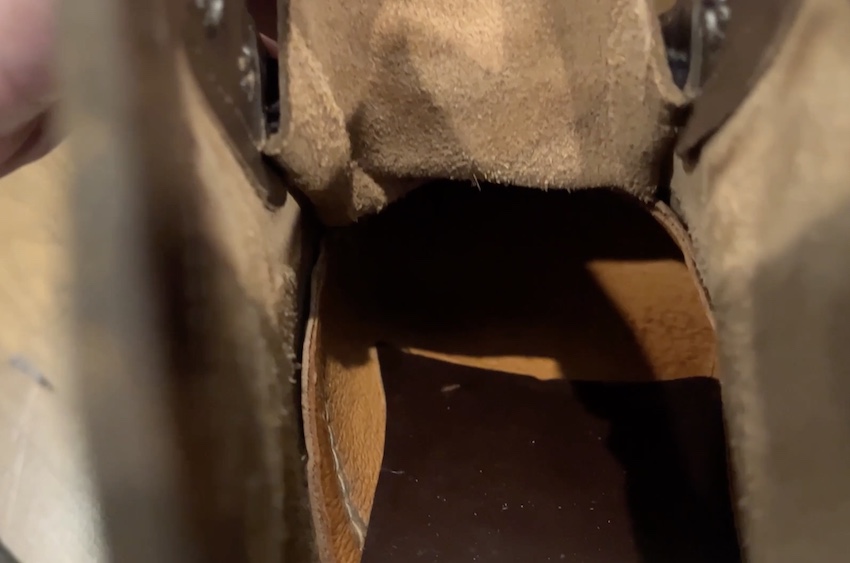
Besides the fact that it’s partially lined with pigskin (so it’s not kosher or halal, which does matter to a couple billion people) and the fact that the heel counter is cellulose and the insole is fiberboard (some guys prefer leather in those spots), the other potential problem you might have is the sock lining, which is the bit of leather under your heel.
It ends halfway down the foot, and some say it can get unstuck with a lot of use. But you can just glue that back down, man, I really don’t think that’s a big deal — plus, this is one of many elements (like the leather sole, no midsole, and fiberglass shank) that make this boot a lot lighter than its competitors.
Speaking of which…
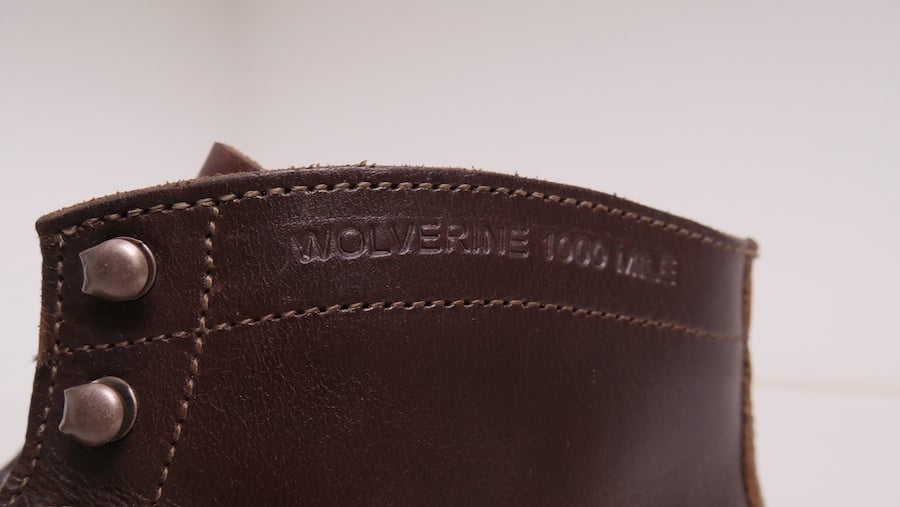
Wolverine 1000 Mile Price
- $385 for the Original version, which has the leather sole
- $400 for the rubber soled 1000 Miles
For a boot that’s made in America with Horween leather and Goodyear welt construction, under $400 is actually a pretty good deal.
I thought that these cost well over $400, but I double-checked the price throughout the years and it was the same price in 2021.
In 2018, when I did my original review, it was $365. A 5 percent price jump in seven years — years that included a certain pandemic — is actually pretty impressive.
Wolverine is a gigantic conglomerate now, so I was ready to hate on them for big price jumps, but the price is still pretty good.
Let’s compare it with some competitors, though.
This classic casual boot is lightweight, resoleable, ages beautifully, and is priced well compared to similar boots made in the USA.
Wolverine 1000 Mile Alternatives
We’ll compare the $400 rubber-soled Wolverine 1000s to some competitors real quick. All of these are also made in the USA with Goodyear welt construction and Horween leather.
- Truman Boot Co: Average about $480 when they’re using Horween leather. Heavier build.
- Allen Edmonds’ Higgins Mill: $550, though a bit smarter.
- Oak Street Bootmakers’ Trench: $488, though they have some fancier touches (like hand lasting) that enthusiasts like.
- Thursday Boot Co’s Vanguard: $265. It’s a sleeker boot with a foam insole, but the price is bonkers.
So as you can see, Wolverine’s price is not that bad relative to those similar boots.

Wolverine 1000 Mile vs Red Wing Boots
But the Wolverine 1000 Mile’s main competitor is Red Wing Heritage. People usually want it compared with their bestselling Iron Ranger, but the Blacksmith (above) is much more similar.
The Blacksmith is $330 and is almost the exact same boot as a rubber soled Wolverine; it’s even got the lack of midsole.
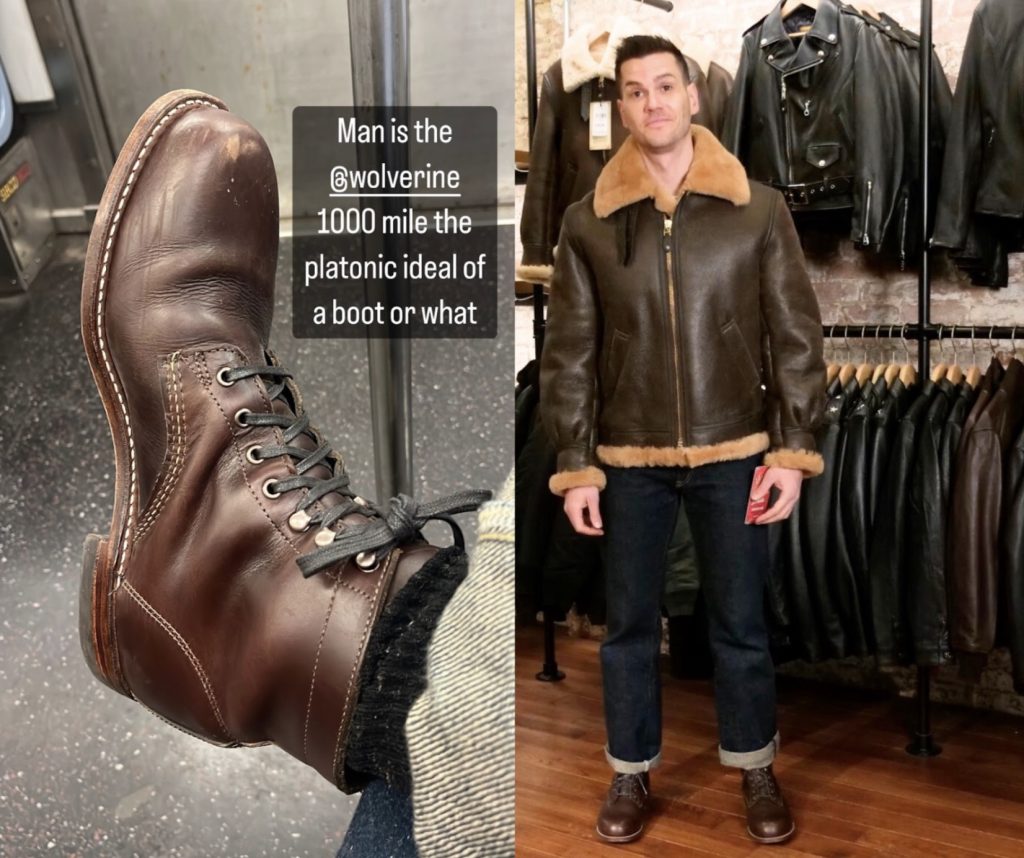
Besides the Blacksmith using a steel shank, the main difference is that Red Wing uses different leathers, and they’re made by a tannery that they own themselves — this closed production loop helps keep the price down.
I kind of think every guy who’s interested in boots should experience a leather sole and Chromexcel leather, but if that doesn’t matter to you… yeah, Red Wing wins the comparison.

Wolverine 1000 Mile: To Buy or Not to Buy?
OK, that’s my review.
They’re good boots.
If you’re going to get one casual boot, it should be with Chromexcel leather, which you get here. I think every guy should try a leather sole, and Wolverine gives you the option — and rubber soled alternatives.

It’s roomy, it’s pretty versatile for a casual boot (lustrous leather and no chunky toe cap elevate it here), they’re very lightweight, they’ll last through a lot of resoles, and the price is pretty solid.
You might prefer to buy from a small company, you might want something more versatile (get an almond toe like Thursday’s Vanguard) or you might prefer a more heavyweight boot, but if those aren’t priorities for you? This is a damn fine boot. It might be the most underrated in America.


